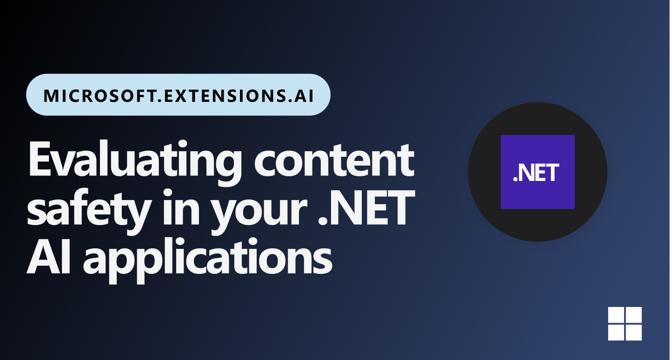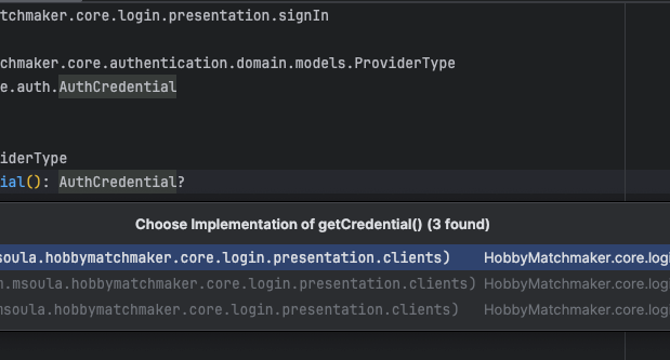Programming News
Medium
118

Image Credit: Medium
Inside the Mechanics of JavaScript Symbol Properties
- JavaScript introduced the Symbol type to create hidden property keys.
- Symbols do not show up when objects are looped over or printed out.
- To create a Symbol, the Symbol() function is used.
- Symbols are unique with the same description strings yielding different values.
- Symbols behave as object keys by being matched by identity.
- Symbol properties are stored separately and do not mix with string keys.
- Symbol keys are treated differently in property lookups and iterations.
- Symbols are flagged as non-enumerable and skipped in common lookup methods.
- Symbol properties can be accessed using Object.getOwnPropertySymbols().
- Symbols are ideal for hiding data within objects and maintaining privacy.
Read Full Article
7 Likes
Mjtsai
186

Microsoft Layoffs
- Microsoft announces laying off 3% of its employees, affecting about 6,000 people.
- The layoffs are part of a larger strategy to restructure and streamline the company by removing layers of management.
- One of the laid-off employees was a former senior software development engineer who contributed to the development of TypeScript at Microsoft.
- The layoffs have sparked discussions about Microsoft's decision-making, with some expressing concerns about the long-term technical strategy.
Read Full Article
11 Likes
Mjtsai
282

SQLite Databases in App Group Containers (Don’t)
- Developers facing issues with SQLite databases in App Group Containers, leading to app crashes due to file locks or SQLite database locks during suspension.
- Apple suggests requesting additional background execution time before writing to files to avoid holding locks during suspension.
- Recommendations include not keeping SQLite database in the shared container, using alternate communication methods with extensions, and avoiding excessive SQLite queries in a single background task.
- To manage SQLite database access across multiple processes, it is recommended to store them in an App Group Container and handle suspension notifications appropriately to prevent lock issues.
Read Full Article
16 Likes
Microsoft
180

Image Credit: Microsoft
Evaluating content safety in your .NET AI applications
- The Microsoft.Extensions.AI.Evaluation.Safety package has been added to the Microsoft.Extensions.AI.Evaluation libraries for detecting harmful content in AI-generated applications.
- The safety evaluators, powered by Azure AI Foundry Evaluation service, can be seamlessly integrated into existing workflows.
- Steps to set up Azure AI Foundry for safety evaluations include creating an Azure subscription, resource group, AI hub, and project.
- A C# example shows how to configure and run safety evaluators to check AI responses for various criteria.
- Running unit tests and generating reports can be done using Visual Studio, Visual Studio Code, or the .NET CLI.
- The API usage samples cover scenarios like evaluating content safety of AI responses with images and running safety and quality evaluators together.
- Updates to Microsoft.Extensions.AI.Evaluation libraries include enhanced quality evaluators and improved reporting functionality.
- New reporting features allow searching and filtering scenarios using tags, viewing rich metadata for metrics, and tracking historical trends.
- Developers are encouraged to explore the content safety evaluators and provide feedback for further enhancements.
- The aim is to elevate the quality and safety of AI applications using these tools.
- The post emphasizes continuous improvement and invites engagement for better utilization of the libraries.
Read Full Article
10 Likes
Discover more
- Software News
- Web Design
- Devops News
- Open Source News
- Databases
- Cloud News
- Product Management News
- Operating Systems News
- Agile Methodology News
- Computer Engineering
- Startup News
- Cryptocurrency News
- Technology News
- Blockchain News
- Data Science News
- AR News
- Apple News
- Cyber Security News
- Leadership News
- Gaming News
- Automobiles News
Logrocket
382

Image Credit: Logrocket
Profit center vs. cost center: How company structure affects engineering
- Understanding the differences between profit and cost centers in engineering teams is crucial for developers, as each operates with distinct mentalities and structures.
- In profit centers, like engineering teams supporting revenue-generating products, investment is seen as beneficial for innovation and revenue growth.
- Profit centers own specific product scopes, with squads led by engineering managers and clear ownership structures to drive continuous improvement.
- However, drawbacks of profit centers include potential team silos and the need for engineers to work on cross-functional projects for career advancement.
- On the other hand, in cost center models, engineers are viewed as resources for projects that support the company's main revenue-generating departments.
- Projects in cost centers may follow a more waterfall methodology, with developers moving to different projects once their current assignment is complete.
- Pros of cost centers include working on diverse projects, slower pace for better work-life balance, modern tech stacks, and greater job security due to risk aversion.
- However, the downsides of cost centers include lower pay, less exciting work, lack of ownership sense, and a slower process for addressing technical debt.
- Choosing between profit and cost centers depends on individual preferences, with stability being a key factor that influences career choices.
- Understanding how engineering teams are positioned within an organization can help developers, whether early in their career or with long-term goals, make informed career decisions.
Read Full Article
23 Likes
Pymnts
321

Image Credit: Pymnts
Microsoft to Retire Bing Search APIs, Promote Azure AI Agents
- Microsoft will retire Bing Search APIs on Aug. 11, as announced on Monday.
- Customers are advised to consider using Grounding with Bing Search as an alternative, integrated with Azure AI Agents.
- Grounding with Bing Search allows Azure AI Agents to incorporate real-time public web data in responses, focusing on chatbots.
- The shift to AI-powered system is to meet market demand; Microsoft offers support for affected customers.
Read Full Article
18 Likes
Medium
323

Image Credit: Medium
Integrate Sign-In with Apple via Firebase in a Compose Multiplatform project
- Integrating Sign-In with Apple in a Compose Multiplatform project using Firebase wrapper made for KMP: GitLive.
- Implemented Google Sign-In for Android and iOS, but faced challenges with Apple Sign-In without SwiftUI.
- Utilized Clean Architecture principles, creating interfaces and wrappers for different social media providers like Apple.
- Incorporated native Swift code into Kotlin Multiplatform project using spm4Kmp plugin for deep integration with iOS frameworks.
Read Full Article
19 Likes
Dev
191

Image Credit: Dev
A Professional Looking API
- The OpenAPI spec is crucial for defining how consumers interact with an API and can enhance developer experience.
- Version 1 and Version 2 of an endpoint are visualized to demonstrate improvements in documentation and client integration.
- API versioning using URL-based approach and Swagger enhances clarity and long-term maintainability.
- Refactored endpoints with task-based actions like SetShippingInfo result in cleaner docs, easier client integration, and a more professional API impression.
Read Full Article
11 Likes
Dev
368

Image Credit: Dev
One-Click Deployment of n8n on Clawcloud Run: Build Enterprise-Grade Automation Workflows with Zero Code
- n8n and Clawcloud Run offer an efficient solution for workflow automation with unique features and advantages.
- Clawcloud Run provides zero-cost entry, high-performance configuration, and simplified operations for deploying applications.
- n8n offers open-source control, flexible extensibility, and a hybrid execution model for diverse automation needs.
- By following a step-by-step deployment process, users can set up n8n on Clawcloud Run and optimize it for advanced functionalities like domain binding, security hardening, and third-party service integrations.
Read Full Article
22 Likes
Dev
127

Image Credit: Dev
LocalLLMClient: A Swift Package for Local LLMs Using llama.cpp and MLX
- LocalLLMClient is a Swift package that enables the use of local Large Language Models (LLMs) on Apple platforms.
- It supports models like MobileVLM-3B (llama.cpp) and Qwen2.5 VL 3B (MLX) for iOS and macOS.
- Features of LocalLLMClient include GGUF / MLX model support, iOS and macOS compatibility, streaming API, and experimental multimodal support.
- The library leverages llama.cpp and Apple MLX backends with a unified interface, allowing interactions with LLMs.
- Basic usage involves importing the necessary components, downloading models from Hugging Face, and generating text using specified parameters.
- Text generation examples demonstrate creating stories with a cat protagonist and generating song lyrics from image inputs.
- Additional features in LocalLLMClientUtility like FileDownloader offer functionalities for managing model downloads efficiently.
- The project emphasizes on-device processing for privacy and cost-effectiveness, thanking the community for supporting local LLM development.
- Overall, LocalLLMClient aims to provide a convenient option for Swift developers wanting to experiment with AI on Apple platforms.
- Supporting the project through contributions or stars on GitHub is encouraged.
Read Full Article
7 Likes
Dev
154

Image Credit: Dev
How to Loop Multiple WAV Stems with AudioKit in Swift?
- Playing multiple audio tracks simultaneously in your Swift app using AudioKit's AudioPlayer can create immersive audio experiences.
- AudioKit's AudioPlayer class is powerful for playback but might have issues with looping WAV stems due to initialization, timing conflicts, or start and stop calls.
- To loop WAV stems with AudioKit, you need to ensure correct initialization of audio players, start them properly, manage playback states, and check AudioKit setup.
- Additionally, you can apply audio effects to players, troubleshoot stopping after the first loop, and consider performance implications of multiple players.
Read Full Article
9 Likes
Dev
150

Image Credit: Dev
Spring Boot Integration Testing
- Spring Boot Integration Testing focuses on testing real applications in a cohesive manner using Spring's tools.
- While JUnit and Mockito are great for isolated testing, Spring's integration testing framework tests the whole application.
- Spring MockMvc allows testing controllers without server deployment, simulating the full Spring MVC lifecycle.
- @WebMvcTest is for testing the web layer, focusing on MVC components and configuring MockMvc.
- @SpringBootTest creates a full application context for testing interaction between all beans and providing a realistic environment.
- @Import allows supplementing test slice with additional beans, while @ContextConfiguration gives explicit control over context setup.
- Common issues in integration testing include package structure for main configuration and deprecated MockBean usage.
- Mocking all repositories used by the Service class can prevent UnsatisfiedDependencyException during context initialization.
- Integration tests example includes testing a JobController that interacts with a JobService calling a Mongo Repo.
- Integration tests cover scenarios like successful job retrieval, empty results, missing query parameters, and service exceptions.
Read Full Article
9 Likes
Javacodegeeks
45

Image Credit: Javacodegeeks
HATEOAS + Spring Security: Why Some Links Are Missing for Certain Roles
- HATEOAS (Hypermedia As The Engine Of Application State) combined with Spring Security allows for dynamically shaping API responses based on user roles.
- Spring HATEOAS enriches REST API responses with navigable links while Spring Security provides authentication and authorization.
- Common reasons for missing HATEOAS links include manual role-based filtering, missing or incorrect role checks, and static link definitions.
- A better approach involves role-aware link building using Spring HATEOAS and Spring Security together, ensuring links adapt based on user roles.
Read Full Article
2 Likes
Dev
4

Image Credit: Dev
Grok 3 API - Reasoning Tokens are Counted Differently
- OpenAI includes reasoning tokens in usage.completion_tokens
- xAI doesn't include reasoning tokens in usage.completion_tokens
- To get the total tokens with OpenAI or Deepseek R1, use the completion_tokens field. With xAI, sum the two values to get correct totals.
- Grok API provides a compatible OpenAI endpoint but xAI deviates from OpenAI's reasoning tokens accounting approach.
Read Full Article
Like
Dev
426

Image Credit: Dev
React Native 0.79+ New Architecture: Bridging with Android Native Modules
- React Native allows developers to interact with platform-specific code using Native Modules for accessing native Android features.
- The blog post details creating a native module in Android and bridging it with React Native, including calling native methods and sending data between React Native and Android.
- Steps provided involve defining interface in Kotlin class, registering the native module with React Native using a package, and calling native methods from React Native in the app.
- By following these steps, developers can effectively bridge JavaScript with the native Android layer to integrate SDKs or platform-specific features not readily available in React Native.
Read Full Article
25 Likes
For uninterrupted reading, download the app